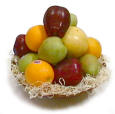https://www.medicalnewstoday.com/articles/295235#when_is_bread_not_healthful
What is refined flour?
To make white bread or white flour, manufacturers process the grain to remove the bran and the germ, leaving only the endosperm.
Products made with refined flour have a finer, lighter texture and usually have a longer shelf life.
However, processing removes most or all of the fiber, vitamins, and minerals. The remaining endosperm provides quick, easily digestible carbohydrates but little else.
This can lead to nutritional deficiencies, so manufacturers now produce “enriched” flours.
They add back some of the missing nutrients to the processed white flour, using supplements, such as folic acid and other B vitamins.
However, supplemental vitamins are not as good as vitamins that come naturally from food sources. Usually, the human body can better absorb and process nutrients from unprocessed sources.
When is bread not healthful?
The highly processed flour and additives in white, packaged bread can make it unhealthful. Consuming too much white bread can contribute to obesity, heart disease, and diabetes.
However, buying bread with the word “whole” as the first ingredient still does not guarantee a healthful product. It is only the first step.
Even whole-grain bread can contain 20 or more ingredients, including preservatives and added salt and sugars. Not all of these contribute to good health.
Preservatives may help bread stay fresh for longer, but people can store fresh bread that contains fewer preservatives in the refrigerator or freezer to maintain freshness.
Many types of bread contain added sugars or sugar substitutes. People should avoid those with corn syrup or any that contain ingredients ending in “-ose” listed at the beginning of the ingredient list because these are all sugars. Examples include sucrose, glucose, and fructose.
Manufacturers typically order an ingredients list according to the weight of ingredients in the product. Ingredients that appear near the top of the list will be present in relatively high proportions.

